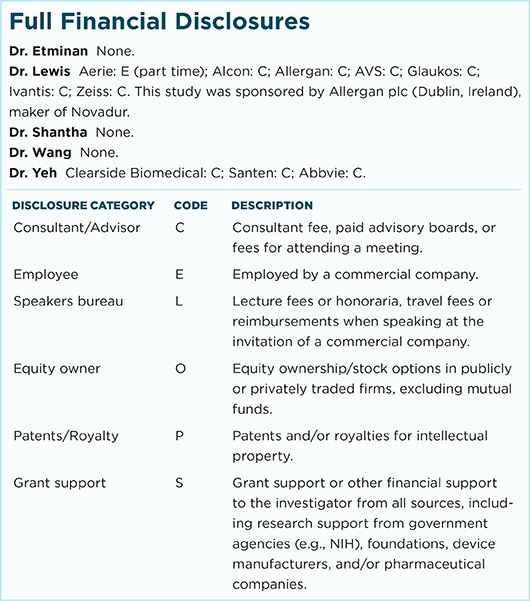Download PDF
Using data from the World Health Organization (WHO) VigiBase—the largest drug safety database in the world—Canadian researchers have found a linkage between intraocular hemorrhage and warfarin and new oral anticoagulants (NOACs). The researchers’ disproportionality analysis of data spanning from 1968 to 2015 revealed a strong signal for the number of intraocular bleeding events with the use of either warfarin or NOACs compared with the risk of intraocular bleeding reported for all other drugs.1
“This strong signal warrants a large epidemiologic study to better quantify the risk and adjust for confounders,” said coauthor Mahyar Etminan, PharmD, MSc, assistant professor of ophthalmology at the University of British Columbia in Vancouver.
Reported cases. The researchers identified 80 cases of vitreous, choroidal, or retinal hemorrhage with warfarin and 156 cases with NOACs, including rivaroxaban, dabigatran, and apixaban. The strongest linkage was seen between warfarin and choroidal hemorrhage, likely due to that drug’s longer history of use, which resulted in more reports of hemorrhage, said Dr. Etminan. However, rivaroxaban had the highest association with retinal and vitreous hemorrhage, even though it has been available for a shorter time than warfarin or dabigatran. According to the authors, the small number of apixaban cases made it more difficult to draw strong conclusions about its level of risk.
Spotlight on NOACs. There aren’t clear guidelines on how to manage NOACs in patients who require ocular surgeries, said Dr. Etminan, but this study begins to fill in some of the knowledge gaps. And future epidemiologic studies can help shed further light on the magnitude of bleeding risks with each type of NOAC and with specific types of ocular surgery, he added.
“In the meantime, I think the results of our study are compelling enough that ophthalmologists should carefully assess a patient’s risk of bleeding before conducting ocular surgery on patients using NOACs.” This is particularly important given the growing popularity of NOACs and given the challenges in reversing their effects, he said, which—unlike warfarin—lack a validated antidote.
—Annie Stuart
___________________________
1 Talany G et al. Eye. 2016;doi:10.1038/eye.2016.265.
___________________________
Relevant financial disclosures—Dr. Etminan: None.
For full disclosures and disclosure key, see below.

More from this month’s News in Review